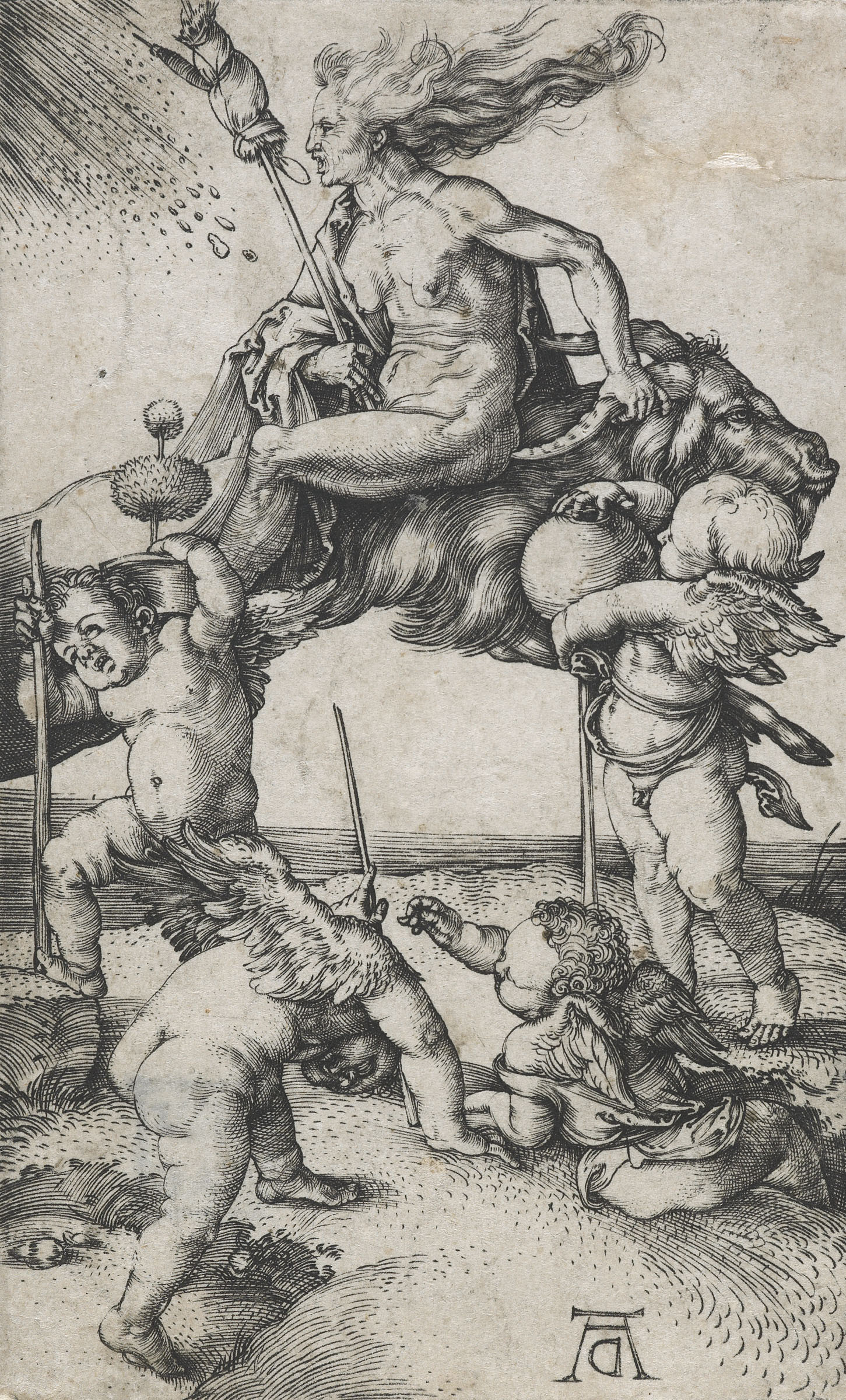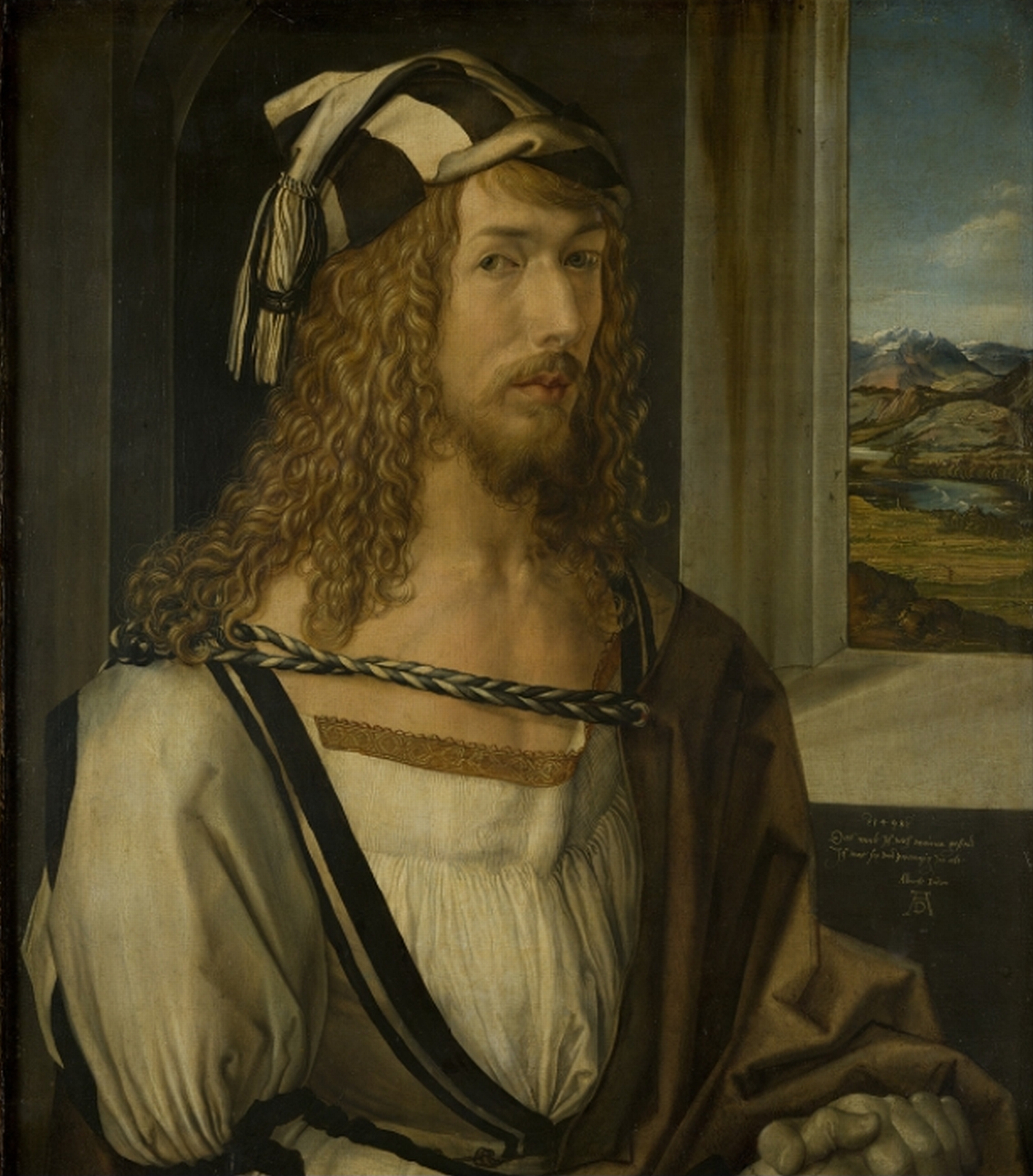This engraving is one of Albrecht Dürer's few prints directly addressing his fascination with witchcraft. The widespread obsession with witches was fueled by texts like The Witches' Hammer, a guide to witch-hunting written by Dominican inquisitors Heinrich Kramer and Jacob Sprenger. First published in Strasbourg in 1487, it was reprinted in Nuremberg in 1494 and 1496 by Anton Koberger. Witchcraft was believed to subvert the natural order, a theme reflected in the engraving: the witch's trailing drapery streams in one direction while her hair and the goat move in the opposite, a reversal further emphasized by Dürer’s famous AD monogram, cleverly flipped in this work.
In this engraving, the witch is shown riding backward on a leaping goat, symbolizing lust and often associated with the devil. Depicted as a shrieking hag, she clutches one of the goat’s horns in one hand and a broomstick or spindle in the other. Her wild hair flies out behind her as stones from a hailstorm fall from the upper left, referencing the belief that witches could summon storms and other forms of destruction. Below her, four putti engage in mischievous activity, their intertwined forms creating a circular composition with the goat. One putto carries an alchemist’s pot, likely a cauldron for the witch’s spells; another holds a thornapple plant, known for its magical properties. A third, with his bottom provocatively directed at the viewer, adds a touch of irreverence as he breaks wind, injecting humor into the sinister scene.
P.S. From old hags to beautiful seducers, the way in which witches were presented in art reflects how society regarded them, and how this perception changed throughout history. Let's take a tour around the history of witchcraft in art!


 Albrecht Dürer
Albrecht Dürer